I’ve been sewing all week, drinking a lot of tea, keeping warm, and not taken a single photo. I’ve read the beginning of The Old Wives’ Tale, been swimming, and listened to Bill Nighy on This Cultural Life and laughed out loud on a train. I’ve not given this newsletter any thought and it’s been a lovely break, allowing different thoughts to take up space in my brain. Mostly things like which fabric to use for which pattern in which size and with which colour buttons, and how to break out of a lifetime of wearing navy blue and grey without going down the purple with a red hat route.
[‘His Girl Friday’ (1940)]
Whilst I don’t have a lot to write about this week because of my empty brain (actually, it’s stuffed with tailor’s tacks and herringbone stitch and interfacing and lining fabrics and seam allowances), I’m looking forward to seeing the Tirzah Garwood exhibition next week, and I’ve also booked to see His Girl Friday at the cinema because any opportunity to see Cary Grant on the big screen should not be ignored, especially when it’s showing just up the road. And it’s the Cambridge Literary Festival this weekend - always nice, lots going on for earnest readers - with people like Patrick Grant and Rupert Everett bringing a touch of glamour to Cambridge.
Otherwise, it’s been a week off writing and a time to cut out, mark up, tack, and sew fabrics. It has made me appreciate proper tailoring and the clever tricks which went into the creation of the Beatles’ suits when they wore the same design or four subtle variations on a theme. Fashioning the Beatles by Deirdre Kelly is fascinating on their clothes and how in the early days how they wanted much tighter, higher-cut trousers in expensive, sometimes slightly shiny fabrics with four-button jackets with velvet collars, so that they had sex appeal but didn’t frighten the old people too much (that came later).
[Cincinatti, August 1966]
My favourite Beatles’ group-suit looks, though, come later when they loosen up, move on from the tight trousers and start to look more late-60s before the actual late-60s with floral shirts and big lapels and wider flares. These suits are a modern take on the classic pinstripe but made from a dobby weave fabric- which looks variously grey, pale blue or lilac - with a bold orange stripe, and are particularly brilliant with floral shirts.
I also like the black wool suits with huge bottle-green silk lapels and ten correspondingly huge matching buttons which were worn with red silk shirts with huge collars (very Carnaby Street) in Japan in 1966. I sewed a Sanda coat this week (level: intermediate) and it has stretched my dressmaking capabilities to the limit, so I have nothing but admiration for this sort of inventive, precise, and highly skilled tailoring.
[Cary Grant matching the sleekly grey 20th Century Limited train in ‘North by Northwest’ (1959)]
My other style icon is Cary Grant who also went to amazing tailors, but in order to achieve far more subtle effects.
Cary Grant: A Celebration of Style by Richard Torregrossa is my escapist read for a cold, wet, windy day in November, and I shall be referring to it after seeing His Girl Friday (although I have no desire to emulate Rosalind Russell’s amazing migraine-inducing outfits which resemble lines of text on newspapers. I mean, imagine trying to match those stripes when sewing.)
[Margaret Howell A/W 24-25]
In fact, I think I often prefer men’s tailoring to women’s, and like well-cut but comfortable jackets, coats, shirts, and trousers in traditional fabrics. If money/availability were no object, I’d be head-to-toe in a mix of Margaret Howell clothes, Diane Keaton’s wardrobe, and Saoirse Ronan’s outfits in Little Women (2019). Maybe I’ll just have to sew it all myself. Now there’s a plan for 2025.
Happy Sunday!




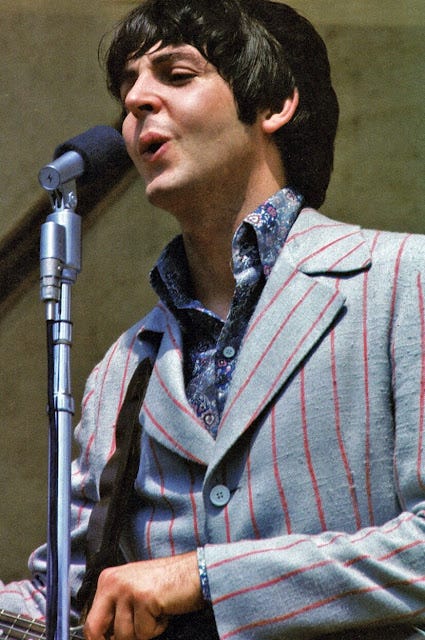
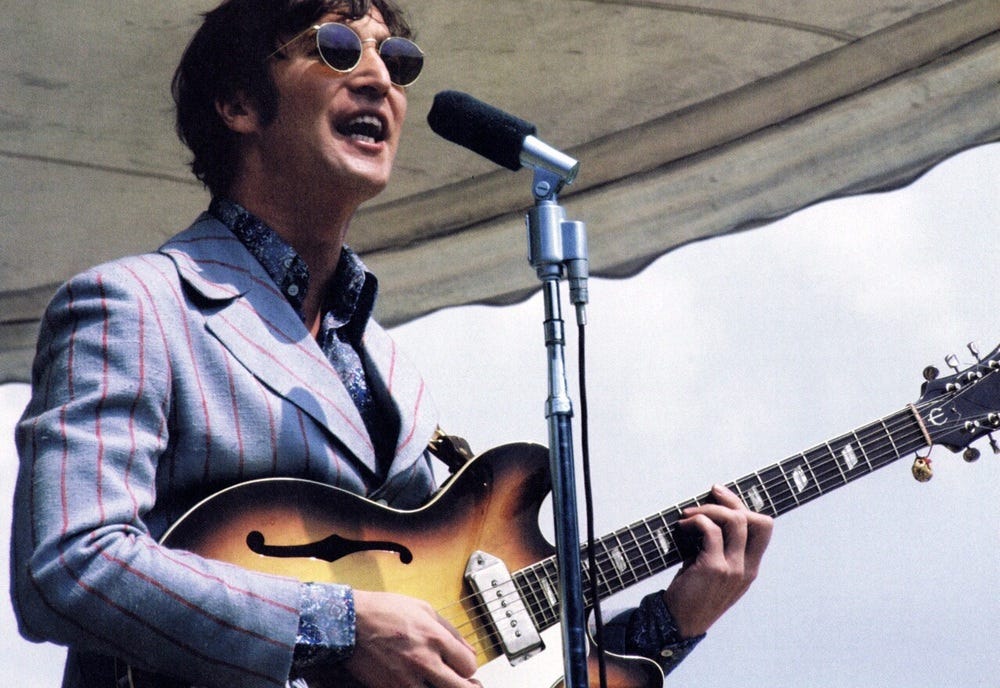
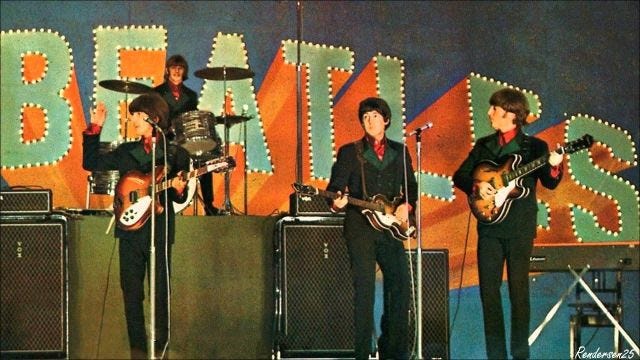
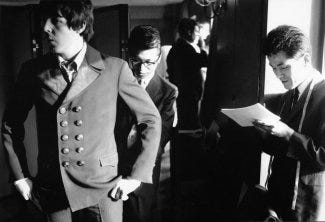
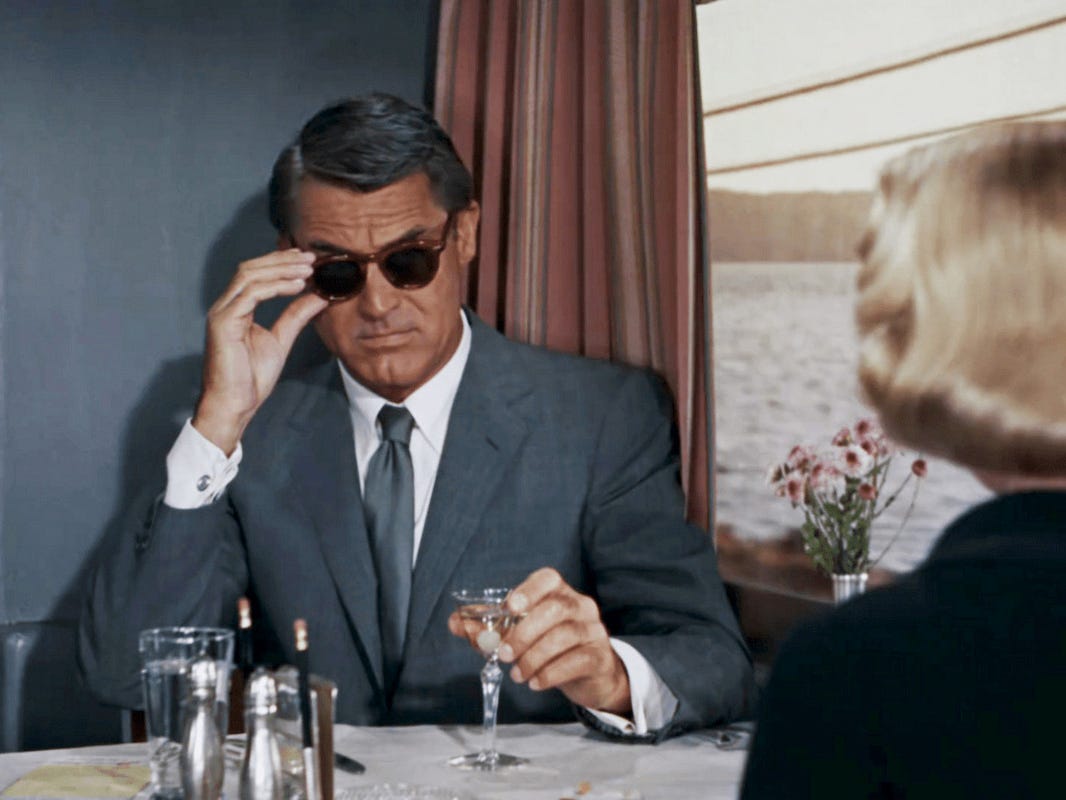

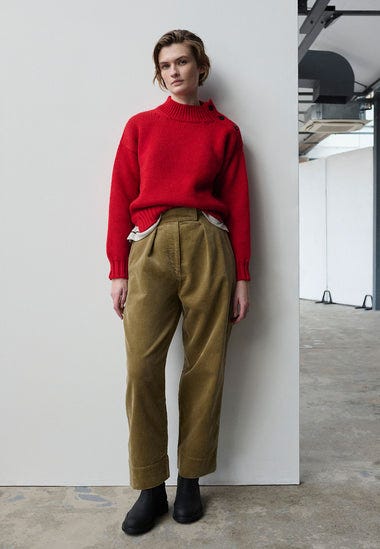
Watching Cary Grant still takes my breath away.
Yes to Diane Keaton from Annie Hall days to the present. She has such great style and knows what works for her